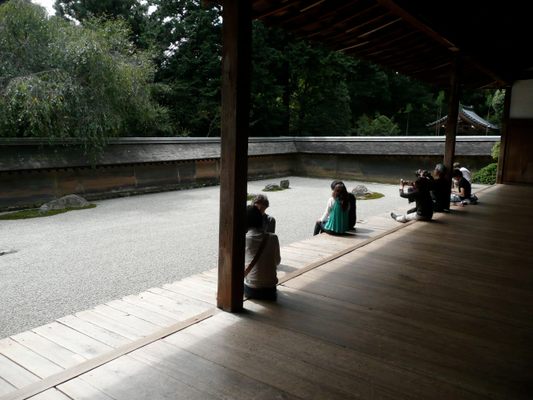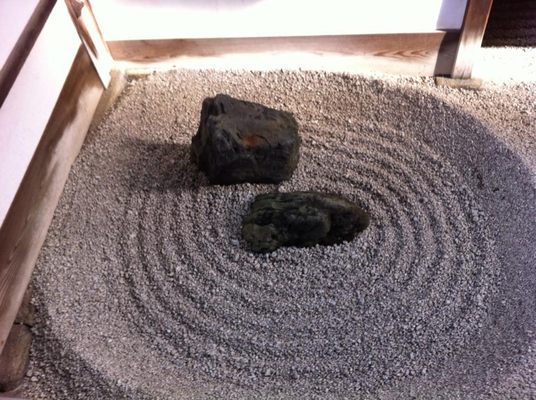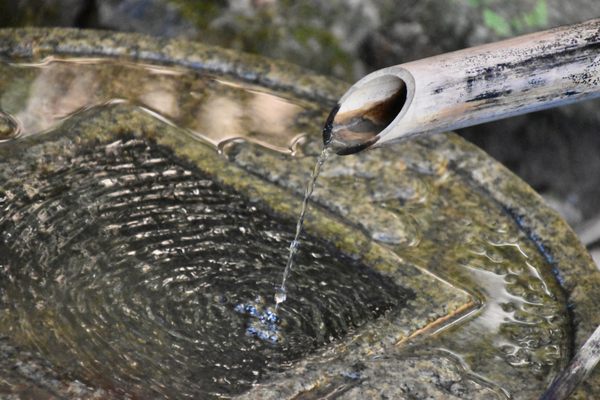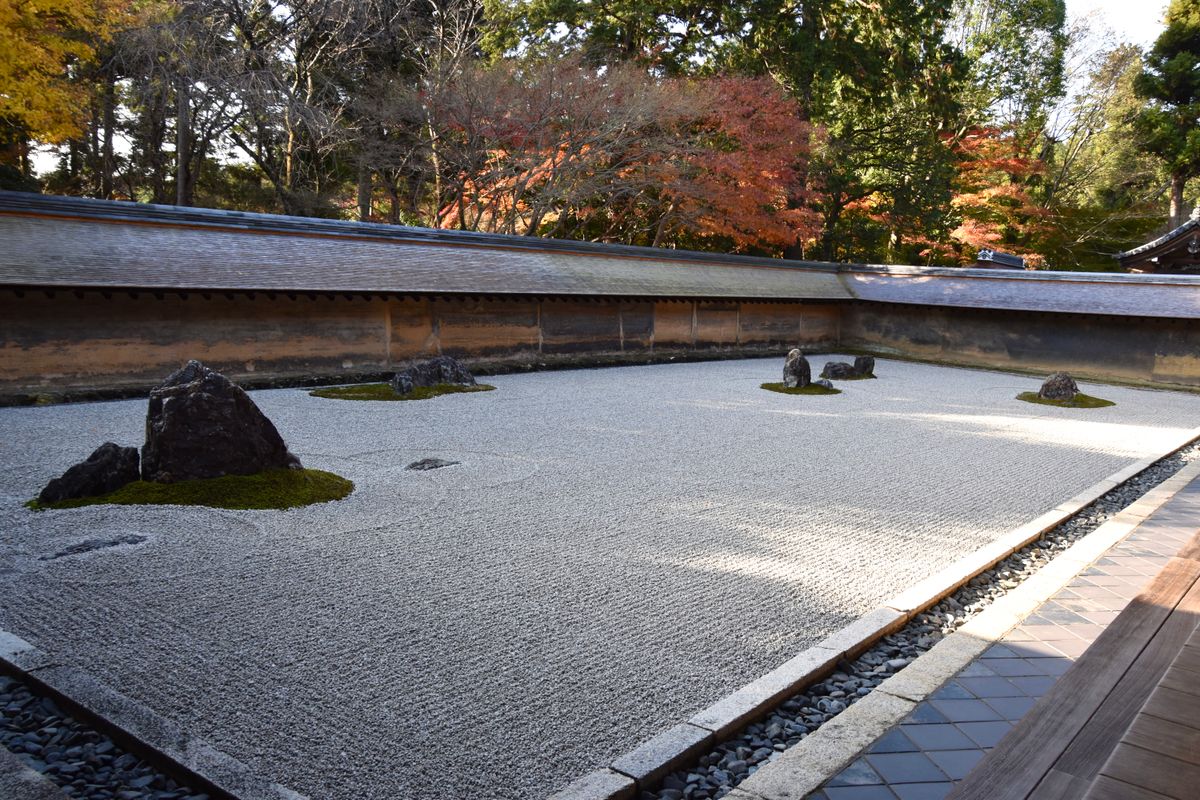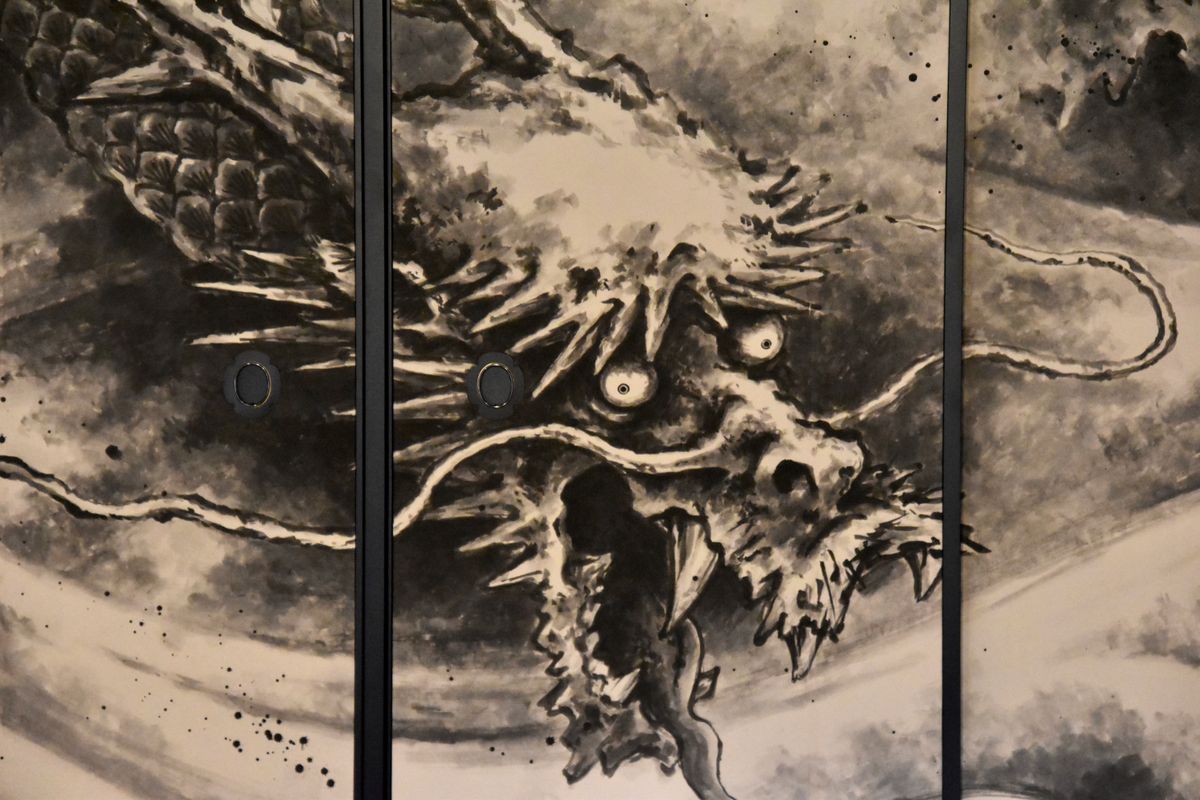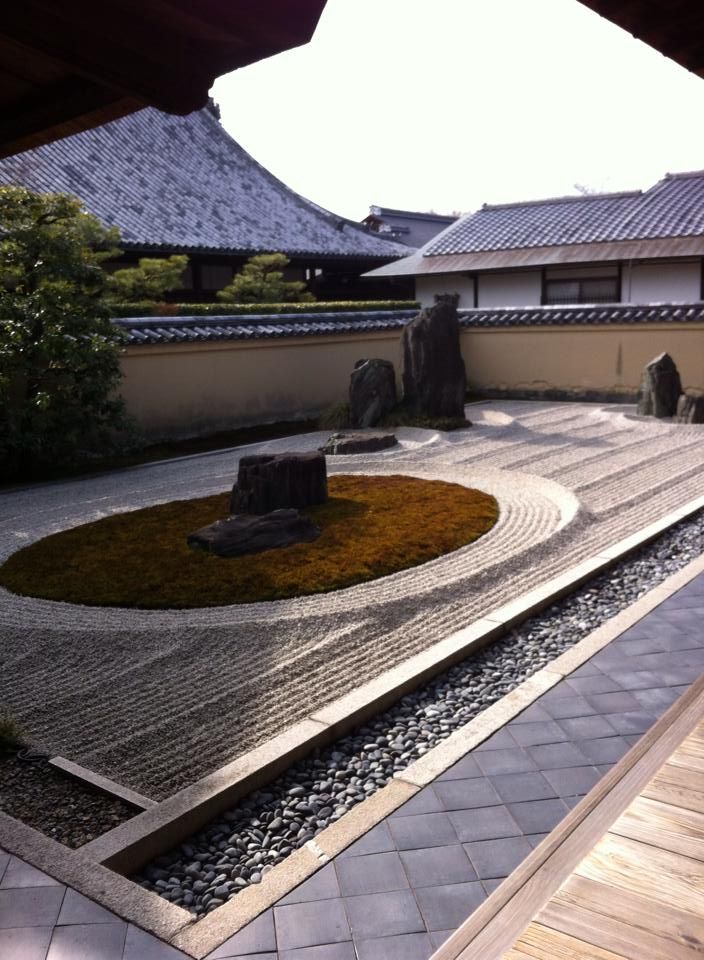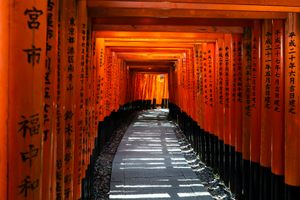About
The tradition of the meditative rock garden is a staple of Japanese culture but very few of the peaceful temples have survived as long and as perfectly as the zen garden at Ryoan-ji.
While Ryoan-ji (The Temple of the Dragon at Peace) is actually the name of the entire temple complex which surrounds the almost 3,000 square foot rock garden, or kare-sansui in Japanese, the name is now synonymous with the serene stone scene. Constructed around the year 1500 either by professional gardeners or monks, the meditative scene contains 15 small boulders resting in a bed of white gravel which is raked into perfect lines each day by the current monks in the temple. It is said that the garden is setup so that visitors can only see 14 of the boulders at one time, but upon enlightenment, they will be able to see fifteen. The garden is surrounded by a wall made of clay boiled in oil that has taken on a rich, woody color from its years at the temple. There are no plants in the garden save for the moss that grows on the stationary boulders.
While the large boulders in the garden appear to have been placed at random, scholars both philosophical and scientific have attempted to divine the meeting of the space. While some say that the rocks are placed in such a way as to draw attention to the architectural flourishes of the building, or that their placement hides some underlying message, most guests agree that so long as you can find personal meaning in the quiet natural order of the garden, you have found the meaning of Ryoan-ji.
Related Tags
Hidden Japan: Sado Island, Nara & Kyoto
Explore a different side of Japan.
Book NowCommunity Contributors
Added By
Published
February 17, 2014


